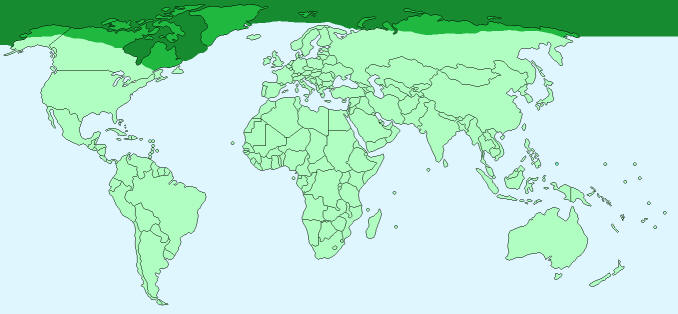Polar Bear

Scientific Name -Ursus maritimus
Classification – Carnivores
Gender Names – Male – boar; Female – sow; baby – cub
Collective Noun – Aurora
Average Length– standing height 2.4 – 3 metres (8- 10 feet)
Average Weight – 380 – 500 kgs (850 to 900lbs)
Speed – 40 kph (25 mph)
Life Expectancy – 25 to 30 years
Mating Season – April and May
Pregnancy – four months
Special Features – The polar bear has an extremely well developed sense of smell, being able to detect seals nearly 1.5 km (1 mile) away and buried up to a metre (3ft) underground.
 Family Unit – Polar bears are solitary creatures spending time alone or sometimes in the company of another bear. Cubs stay with their mother for 2 years until they are able to fend for themselves in the wild.
Family Unit – Polar bears are solitary creatures spending time alone or sometimes in the company of another bear. Cubs stay with their mother for 2 years until they are able to fend for themselves in the wild.
Geographical Distribution – Arctic Ocean
World Population – 20,000–25,000
Conservation Status – Threatened
Natural Habitat – sea ice
Diet – ringed and bearded seals
Predators – killer whale and humans
Harvard Reference for this page:
Heather Y Wheeler. (2015). Polar Bear. Available: https://www.naturalhistoryonthenet.com/Mammals/polar_bear.htm. Last accessed Monday, July 18, 2016
Mammals Pages
Features
Classification
Mammals A – Z
